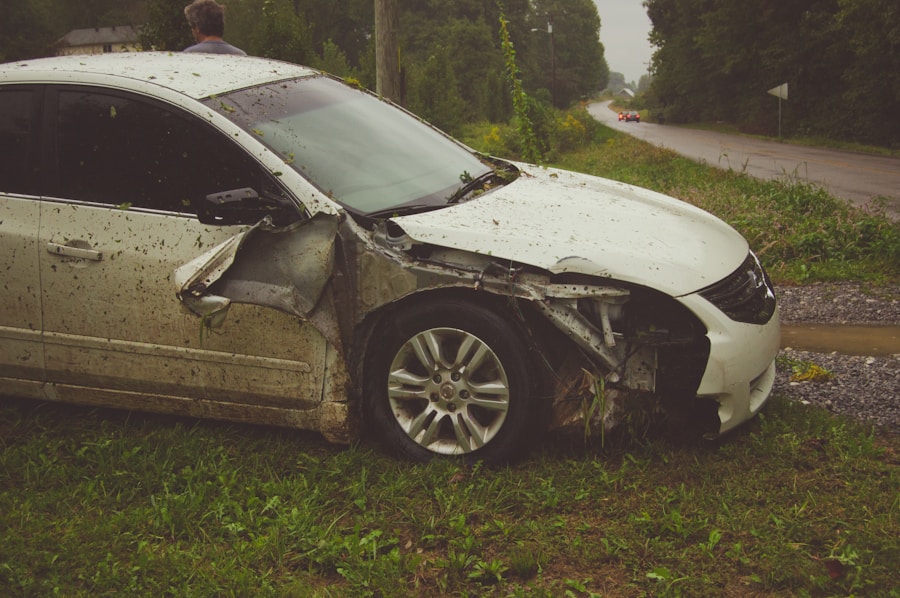Car safety myths have long been a part of the automotive culture, often perpetuated by anecdotal evidence, urban legends, and a general misunderstanding of how insurance works. These myths can lead to misconceptions that not only affect individual drivers but also influence broader perceptions about vehicle safety and insurance costs. As vehicles become increasingly sophisticated with advanced safety features, the myths surrounding car safety and insurance continue to evolve.
Understanding these myths is crucial for consumers who want to make informed decisions about their vehicles and insurance coverage. The proliferation of misinformation can lead to significant financial implications for drivers. For instance, believing in a myth could result in higher insurance premiums or inadequate coverage in the event of an accident.
As such, it is essential to dissect these myths and provide clarity on the realities of car safety and insurance. By doing so, drivers can better navigate the complexities of car ownership and ensure they are adequately protected on the road.
Key Takeaways
- Car safety myths can impact insurance coverage and costs
- Red cars are not more expensive to insure
- Older cars may not be safer and cheaper to insure
- Insurance may not cover any accident regardless of fault
- Insurance rates can be affected by driving record and vehicle safety features
Myth 1: Red Cars are More Expensive to Insure
One of the most enduring myths in automotive circles is that red cars are more expensive to insure than vehicles of other colors. This belief often stems from the stereotype that red cars are driven by speed enthusiasts or reckless drivers, leading insurers to assume a higher risk associated with these vehicles. However, insurance companies do not consider the color of a car when determining premiums.
Instead, they focus on factors such as the make and model of the vehicle, its safety ratings, the driver’s history, and the likelihood of theft. In reality, the color of a car has no bearing on its insurance costs. For example, a red sports car may attract attention and be perceived as a target for theft, but this perception does not translate into higher premiums solely based on color.
Insurers analyze data that correlates with risk factors rather than relying on superficial attributes like paint color. Therefore, drivers should not shy away from purchasing a red car due to misconceptions about insurance costs; instead, they should focus on selecting a vehicle that meets their safety needs and budget.
Myth 2: Older Cars are Safer and Cheaper to Insure

Another prevalent myth is that older cars are inherently safer and cheaper to insure than newer models. While it is true that some older vehicles may have simpler mechanics and fewer electronic components that could fail, they often lack modern safety features such as advanced airbags, anti-lock braking systems, and electronic stability control. These features significantly enhance the safety of newer vehicles, making them less likely to be involved in serious accidents.
Consequently, older cars may not provide the same level of protection in a collision. When it comes to insurance costs, older cars can sometimes be cheaper to insure due to their lower market value. However, this does not mean they are safer or that they will always result in lower premiums.
Insurers take into account various factors, including repair costs and the likelihood of accidents involving older models. For instance, a classic car may be less expensive to insure because it is driven less frequently and is often kept in pristine condition. Conversely, an older model that lacks modern safety features may lead to higher premiums due to increased risk factors associated with its age and design.
Myth 3: Insurance Covers Any Accident Regardless of Fault
| Insurance Coverage | Percentage of Fault | Claim Payout |
|---|---|---|
| Full Coverage | 0% | 100% of claim |
| Full Coverage | 50% | 50% of claim |
| Full Coverage | 100% | 0% of claim |
| Liability Coverage | 0% | 100% of other party’s claim |
| Liability Coverage | 100% | 0% of own claim |
A common misconception among drivers is that their insurance will cover any accident they are involved in, regardless of who is at fault. This myth can lead to significant misunderstandings about how auto insurance works. In reality, coverage depends on the type of policy a driver holds and the circumstances surrounding the accident.
Most standard auto insurance policies include liability coverage, which pays for damages caused by the policyholder if they are at fault in an accident. However, if a driver is found to be at fault, their own insurance may not cover damages incurred by other parties unless they have sufficient liability limits. Furthermore, many drivers may not realize that certain types of coverage—such as collision or comprehensive—are optional and may not be included in every policy.
Collision coverage helps pay for damages to a driver’s own vehicle after an accident, regardless of fault, while comprehensive coverage protects against non-collision-related incidents like theft or natural disasters. If a driver only has liability coverage and is involved in an accident where they are at fault, they may face significant out-of-pocket expenses for their own vehicle repairs.
Myth 4: Insurance Rates are Not Affected by Driving Record
The belief that insurance rates are unaffected by a driver’s history is another widespread myth that can lead to financial pitfalls. In reality, a driver’s record plays a crucial role in determining their insurance premiums. Insurance companies assess risk based on various factors, including past driving behavior, which encompasses accidents, traffic violations, and claims history.
A clean driving record typically results in lower premiums because insurers view these drivers as less risky. Conversely, drivers with multiple accidents or traffic violations may find themselves facing significantly higher rates. For example, a driver who has received several speeding tickets or has been involved in multiple accidents may be categorized as high-risk by insurers.
This classification can lead to increased premiums or even difficulty obtaining coverage altogether. Therefore, maintaining a clean driving record is essential for keeping insurance costs manageable.
Myth 5: Insurance Rates are Not Affected by Vehicle Safety Features

Many consumers believe that the presence of advanced safety features in their vehicles does not impact their insurance rates. This myth overlooks the fact that insurers often reward drivers for choosing vehicles equipped with modern safety technologies. Features such as automatic emergency braking, lane departure warnings, and adaptive cruise control can reduce the likelihood of accidents and injuries, making these vehicles less risky for insurers.
For instance, studies have shown that cars equipped with advanced safety features tend to have lower accident rates compared to those without such technologies. As a result, insurers may offer discounts or lower premiums for vehicles that demonstrate enhanced safety capabilities. A driver who invests in a car with robust safety features may find that their proactive choice leads to significant savings on their insurance policy over time.
The Impact of Car Safety Myths on Insurance Coverage
The prevalence of car safety myths can have far-reaching consequences for drivers seeking adequate insurance coverage. Misunderstandings about how insurance works can lead individuals to make uninformed decisions regarding their policies and vehicle choices. For example, believing that red cars are more expensive to insure might deter someone from purchasing a vehicle they love simply because of its color.
Similarly, misconceptions about older cars being safer could result in inadequate protection when driving an outdated model lacking modern safety features.
This misunderstanding can lead to financial strain if an accident occurs and they discover their policy does not provide the expected coverage.
The impact extends beyond individual drivers; widespread belief in these myths can influence market trends and consumer behavior within the automotive industry.
Debunking Car Safety Myths and Ensuring Proper Insurance Coverage
To navigate the complexities of car ownership and insurance effectively, it is essential for consumers to debunk common car safety myths and understand how they relate to their coverage options. Education plays a vital role in this process; drivers should seek out reliable information from reputable sources such as insurance companies or automotive safety organizations. By arming themselves with accurate knowledge about how insurance works and what factors influence premiums, consumers can make informed decisions that align with their needs.
By asking questions and seeking clarification on policy details, drivers can ensure they have the right level of protection tailored to their unique circumstances. Ultimately, dispelling these myths empowers consumers to take control of their automotive choices while ensuring they are adequately covered on the road.
If you’re interested in learning more about insurance coverage, you may want to check out this article on auto insurance. Understanding the ins and outs of your policy can help you avoid costly mistakes and ensure you have the coverage you need in case of an accident. Don’t let myths about car safety and insurance coverage leave you unprotected – educate yourself and make informed decisions about your insurance needs.
FAQs
What are some common car safety myths that could affect insurance coverage?
Some common car safety myths that could affect insurance coverage include myths about the color of your car affecting insurance rates, older cars being safer than newer cars, and insurance covering all types of car damage.
Does the color of your car affect insurance rates?
No, the color of your car does not affect insurance rates. Insurance companies base their rates on factors such as the make and model of the car, the driver’s age and driving record, and the car’s safety features.
Are older cars safer than newer cars?
Not necessarily. While older cars may have a reputation for being more durable, newer cars often come equipped with advanced safety features such as airbags, anti-lock brakes, and electronic stability control, which can make them safer in the event of a crash.
Does insurance cover all types of car damage?
Insurance coverage varies depending on the type of policy you have. While comprehensive coverage can protect against damage from events such as theft, vandalism, and natural disasters, basic liability coverage may only cover damage to other vehicles in an accident.
Do aftermarket modifications affect insurance coverage?
Yes, aftermarket modifications such as performance upgrades or cosmetic changes can affect insurance coverage. It’s important to inform your insurance company of any modifications to ensure that they are properly covered.


